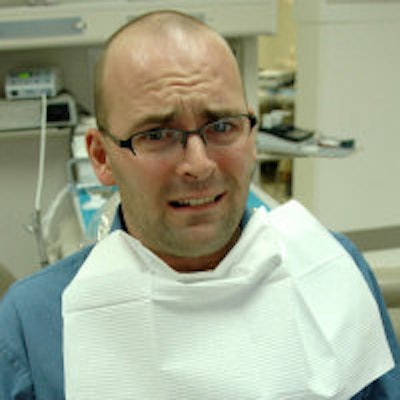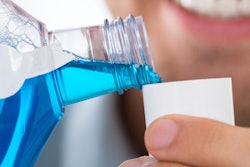
What do you tell your adult patients who are at high risk for caries? A large new study from California published in BMC Oral Health found that repeated delivery of anticaries agents, including chlorhexidine rinse, topical fluoride, and xylitol products, can reduce tooth decay.
In the study of more than 2,700 adults classified as high risk for caries development, the delivery of these nonoperative anticaries agents at multiple visits was associated with approximately one fewer decayed or restored tooth over 18 months for every three patients treated.
The study results support the use of anticaries agents, wrote lead author Benjamin Chaffee, DDS, MPH, PhD, and colleagues from the University of California, San Francisco (UCSF) School of Dentistry.
"These findings suggest that aggressive management with remineralization and/or antibacterial agents can successfully reduce the severity of dental caries in high-risk patients" (BMC Oral Health, September 24, 2015).
New treatment approach
Traditionally, there is a reliance on surgical treatments for caries in dentistry, the authors noted. The approach tested in this study, caries management by risk assessment (CAMBRA), focuses on individual treatment decisions based on a patient's behaviors and characteristics, rather than a one-treatment-fits-all approach. CAMBRA focuses on caries prevention and preservation of tooth structure.
For high-risk patients, CAMBRA clinical guidelines recommend providing antibacterial therapy, such as chlorhexidine or xylitol products, and remineralizing agents, such as high-concentration fluoride toothpaste, to manage the caries disease process.
The researchers set out to measure caries management outcomes based on electronic patient records at a university clinic where CAMBRA is emphasized. Specifically, they wanted to know if a patient's caries increment would be reduced if they received nonoperative anticaries agents.
| Study population characteristics (N = 2,724) | |
| Patient sex, % | Male, 51.2; female, 48.8 |
| Patient age, % | |
| 18-34 years | 22.4 |
| 35-44 years | 14.0 |
| 45-54 years | 18.9 |
| 55-64 years | 20.9 |
| ≥ 65 years | 23.8 |
| Patient payor type, % | |
| Private insurance | 18.1 |
| Public program | 24.3 |
| Cash | 57.6 |
| Patient race/ethnicity, % | |
| African-American | 9.5 |
| Asian | 13.9 |
| Caucasian | 49.1 |
| Hispanic/Latino | 15.9 |
| Other or declined to state | 11.5 |
In the study, 2,724 patients completed at least one follow-up examination at least 180 days after baseline (patient characteristics are shown in the table). The researchers compared the number of newly decayed and restored teeth (DFT increment, a count outcome) and caries incidence (DFT increment > 0) from baseline to follow-up.
More than half of the participants (55%) did not receive a nonoperative anticaries agent. Of those who did, all began therapy within 180 days of the baseline visit. More than 300 patients received anticaries agents at two or more visits, and 82.7% of these patients were given more than one type of agent.
In this group, 83% received high-concentration fluoride gel or toothpaste for home use, 67.2% received chlorhexidine rinse, and 42.7% received xylitol-containing products. Those patients who received anticaries agents at least twice were more likely to be female, to be older, and to receive dental benefits through a public program.
Among the patients who received anticaries agents at two or more appointments, the researchers found a statistically significant 19% reduction in adjusted DFT increment over 18 months (1.47 affected teeth, compared with 1.82 affected teeth in the no-therapy group).
The greatest reduction in DFT increment was seen in patients with public dental benefits (difference in increment: -0.63), the authors wrote. This group "almost entirely comprised patients enrolled in the state Medicaid dental program and who were offered anticaries products at no charge."
1 treatment only
The authors made the assumption that restorative treatment completed within 180 days of baseline was in response to baseline decay rather than new conditions for inclusion in DFT increment.
They also found that patients who received anticaries agents once did not see the same benefit as the multiple-treatment patients. In addition, new decay (DFT increment > 0) did not differ substantially across the study groups, regardless of whether anticaries agents were received once or repeatedly.
"Further research is required to determine whether the results observed in this study can be generalized beyond this educational clinic, which predominantly serves lower-income patients at high caries risk," the authors wrote.



















